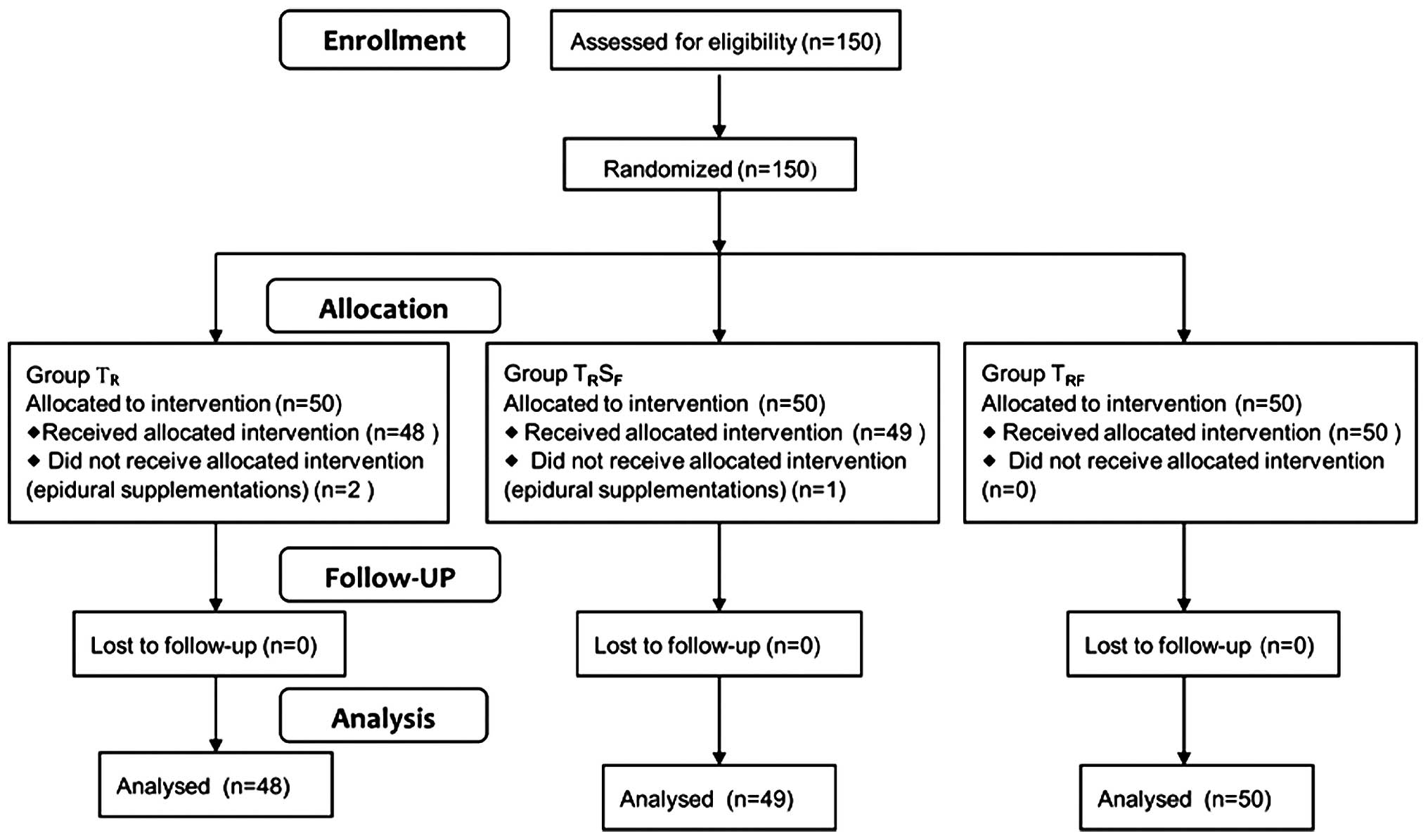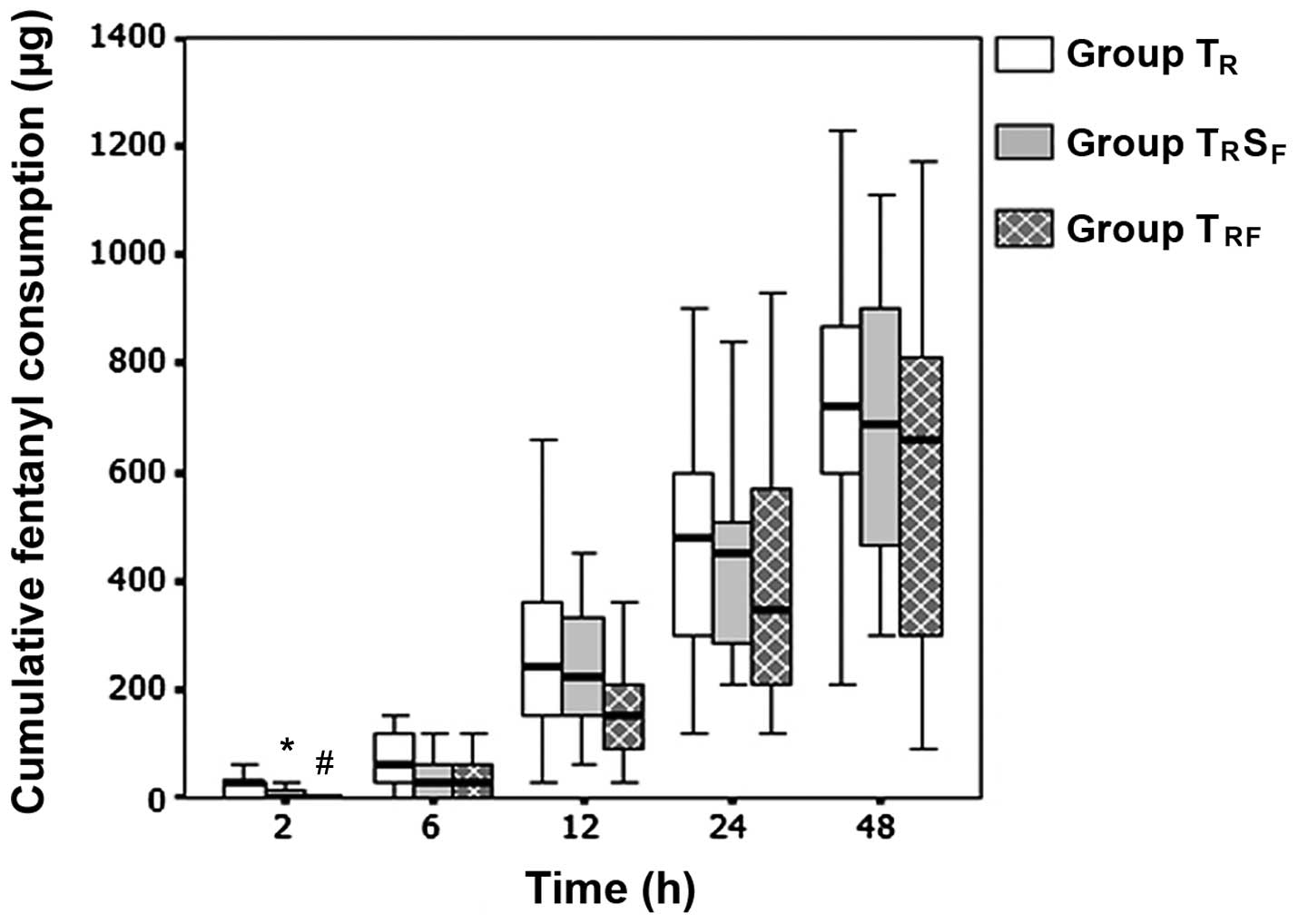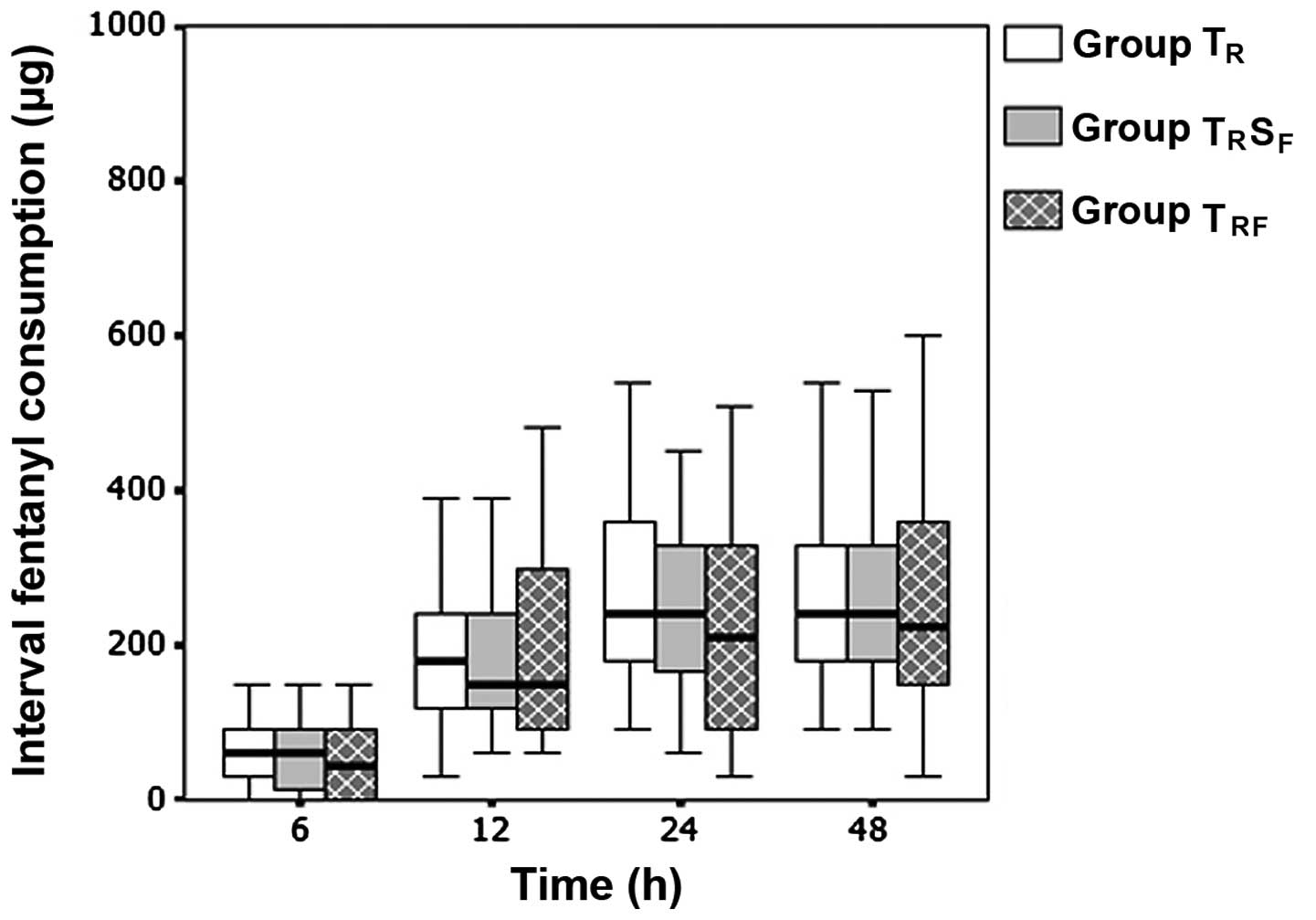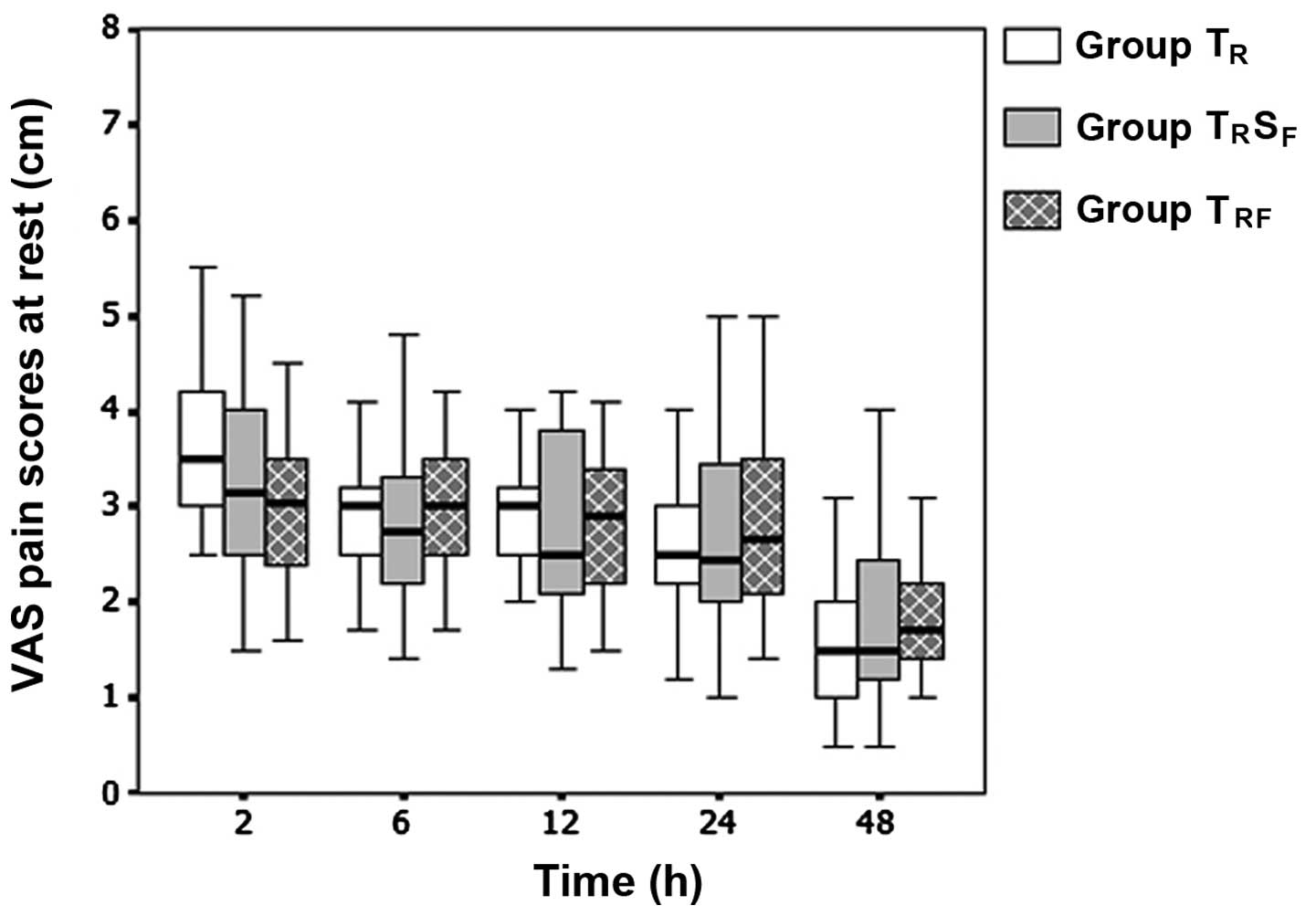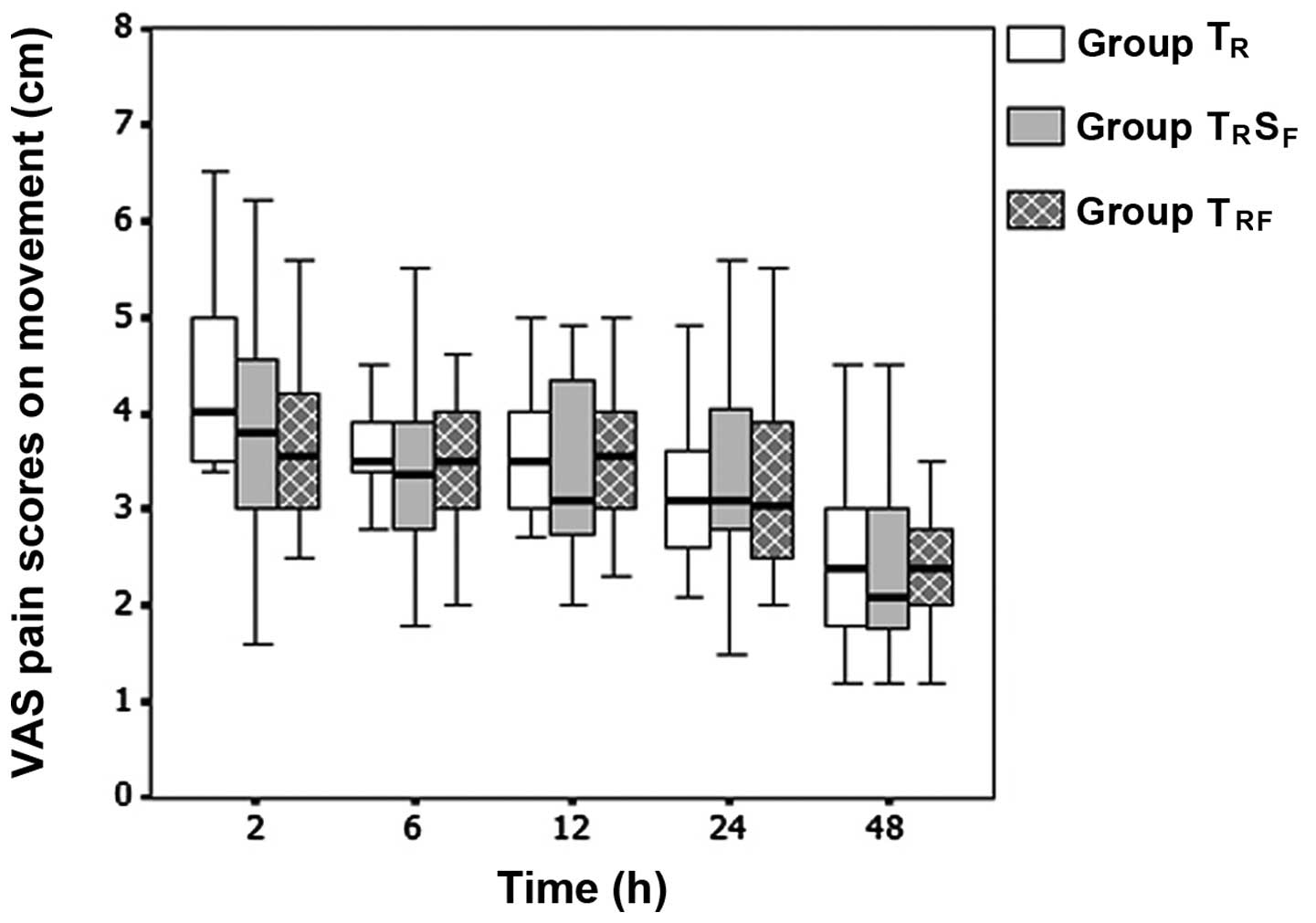|
1
|
McDonnell JG, O'Donnell B, Curley G,
Heffernan A, Power C and Laffey JG: The analgesic efficacy of
transversus abdominis plane block after abdominal surgery: A
prospective randomized controlled trial. Anesth Analg. 104:193–197.
2007. View Article : Google Scholar : PubMed/NCBI
|
|
2
|
McDonnell JG, Curley G, Carney J, Benton
A, Costello J, Maharaj CH and Laffey JG: The analgesic efficacy of
transversus abdominis plane block after cesarean delivery: A
randomized controlled trial. Anesth Analg. 106:186–191. 2008.
View Article : Google Scholar : PubMed/NCBI
|
|
3
|
Belavy D, Cowlishaw PJ, Howes M and
Phillips F: Ultrasound-guided transversus abdominis plane block for
analgesia after caesarean delivery. Br J Anaesth. 103:726–730.
2009. View Article : Google Scholar : PubMed/NCBI
|
|
4
|
Kanazi GE, Aouad MT, Abdallah FW, Khatib
MI, Adham AM, Harfoush DW and Siddik-Sayyid SM: The analgesic
efficacy of subarachnoid morphine in comparison with
ultrasound-guided transversus abdominis plane block after cesarean
delivery: A randomized controlled trial. Anesth Analg. 111:475–481.
2010. View Article : Google Scholar : PubMed/NCBI
|
|
5
|
Abdallah FW, Halpern SH and Margarido CB:
Transversus abdominis plane block for postoperative analgesia after
caesarean delivery performed under spinal anaesthesia? A systematic
review and meta-analysis. Br J Anaesth. 109:679–687. 2012.
View Article : Google Scholar : PubMed/NCBI
|
|
6
|
Stein C and Lang LJ: Peripheral mechanisms
of opioid analgesia. Curr Opin Pharmacol. 9:3–8. 2009. View Article : Google Scholar : PubMed/NCBI
|
|
7
|
Axelsson K and Gupta A: Local anaesthetic
adjuvants: Neuraxial versus peripheral nerve block. Curr Opin
Anaesthesiol. 22:649–654. 2009. View Article : Google Scholar : PubMed/NCBI
|
|
8
|
Gissen AJ, Gugino LD, Datta S, Miller J
and Covino BG: Effects of fentanyl and sufentanil on peripheral
mammalian nerves. Anesth Analg. 66:1272–1276. 1987. View Article : Google Scholar : PubMed/NCBI
|
|
9
|
Nishikawa K, Kanaya N, Nakayama M,
Igarashi M, Tsunoda K and Namiki A: Fentanyl improves analgesia but
prolongs the onset of axillary brachial plexus block by peripheral
mechanism. Anesth Analg. 91:384–387. 2000. View Article : Google Scholar : PubMed/NCBI
|
|
10
|
Karakaya D, Büyükgöz F, Bariş S, Güldoğuş
F and Tür A: Addition of fentanyl to bupivacaine prolongs
anesthesia and analgesia in axillary brachial plexus block. Reg
Anesth Pain Med. 26:434–438. 2001. View Article : Google Scholar : PubMed/NCBI
|
|
11
|
Sindjelic RP, Vlajkovic GP, Davidovic LB,
Markovic DZ and Markovic MD: The addition of fentanyl to local
anesthetics affects the quality and duration of cervical plexus
block: A randomized, controlled trial. Anesth Analg. 111:234–237.
2010.PubMed/NCBI
|
|
12
|
Mane RS, Sanikop CS, Dhulkhed VK and Gupta
T: Comparison of bupivacaine alone and in combination with fentanyl
or pethidine for bilateral infraorbital nerve block for
postoperative analgesia in pediatric patients for cleft lip repair:
A prospective randomized double blind study. J Anaesthesiol Clin
Pharmacol. 27:23–26. 2011.PubMed/NCBI
|
|
13
|
Constant I, Gall O, Gouyet L, Chauvin M
and Murat I: Addition of clonidine or fentanyl to local
anaesthetics prolongs the duration of surgical analgesia after
single shot caudal block in children. Br J Anaesth. 80:294–298.
1998. View Article : Google Scholar : PubMed/NCBI
|
|
14
|
Burlacu CL, Frizelle HP, Moriarty DC and
Buggy DJ: Fentanyl and clonidine as adjunctive analgesics with
levobupivacaine in paravertebral analgesia for breast surgery.
Anaesthesia. 61:932–937. 2006. View Article : Google Scholar : PubMed/NCBI
|
|
15
|
Fanelli G, Casati A, Magistris L, Berti M,
Albertin A, Scarioni M and Torri G: Fentanyl does not improve the
nerve block characteristics of axillary brachial plexus anaesthesia
performed with ropivacaine. Acta Anaesthesiol Scand. 45:590–594.
2001. View Article : Google Scholar : PubMed/NCBI
|
|
16
|
Fletcher D, Kuhlman G and Samii K:
Addition of fentanyl to 1.5% lidocaine does not increase the
success of axillary plexus block. Reg Anesth. 19:183–188.
1994.PubMed/NCBI
|
|
17
|
Johansson A, Kornfält J, Nordin L,
Svensson L, Ingvar C and Lundberg J: Wound infiltration with
ropivacaine and fentanyl: Effects on postoperative pain and PONV
after breast surgery. J Clin Anesth. 15:113–118. 2003. View Article : Google Scholar : PubMed/NCBI
|
|
18
|
American Society of Anesthesiologists: New
classification of physical status. Anesthesiology. 24:1111963.
|
|
19
|
Birnbach DJ and Ojea LS: Combined
spinal-epidural (CSE) for labor and delivery. Int Anesthesiol Clin.
40:27–48. 2002. View Article : Google Scholar : PubMed/NCBI
|
|
20
|
Hebbard P, Fujiwara Y, Shibata Y and Royse
C: Ultrasound-guided transversus abdominis plane (TAP) block.
Anaesth Intensive Care. 35:616–617. 2007.PubMed/NCBI
|
|
21
|
DeLoach LJ, Higgins MS, Caplan AB and
Stiff JL: The visual analogue scale in the immediate postoperative
period: intrasubject variability and correlation with a numeric
scale. Anesth Analg. 86:102–106. 1998. View Article : Google Scholar : PubMed/NCBI
|
|
22
|
Ammar AS and Mahmoud KM: Effect of adding
dexamethasone to bupivacaine on transversus abdominis plane block
for abdominal hysterectomy: A prospective randomized controlled
trial. Saudi J Anaesth. 6:229–233. 2012. View Article : Google Scholar : PubMed/NCBI
|
|
23
|
Bollag L, Richebe P, Siaulys M, Ortner CM,
Gofeld M and Landau R: Effect of transversus abdominis plane block
with and without clonidine on post-cesarean delivery wound
hyperalgesia and pain. Reg Anesth Pain Med. 37:508–514. 2012.
View Article : Google Scholar : PubMed/NCBI
|
|
24
|
Murphy DB, McCartney CJ and Chan VW: Novel
analgesic adjuncts for brachial plexus block: A systematic review.
Anesth Analg. 90:1122–1128. 2000. View Article : Google Scholar : PubMed/NCBI
|
|
25
|
Gupta A, Bodin L, Holmström B and Berggren
L: A systematic review of the peripheral analgesic effects of
intraarticular morphine. Anesth Analg. 93:761–770. 2001. View Article : Google Scholar : PubMed/NCBI
|















